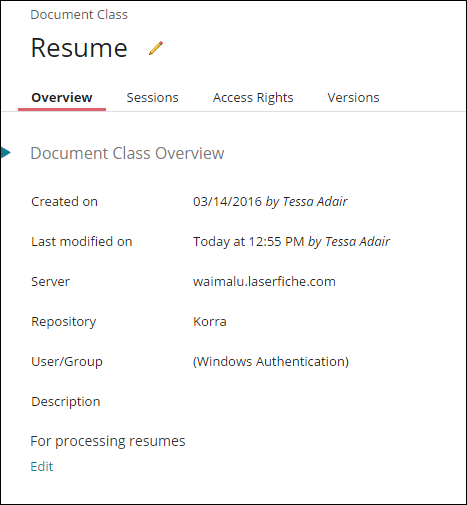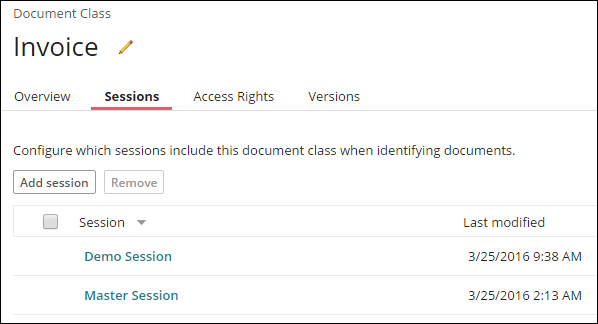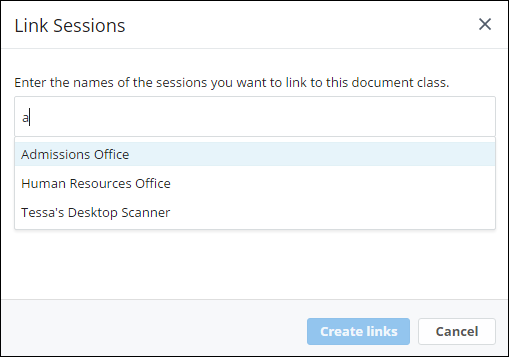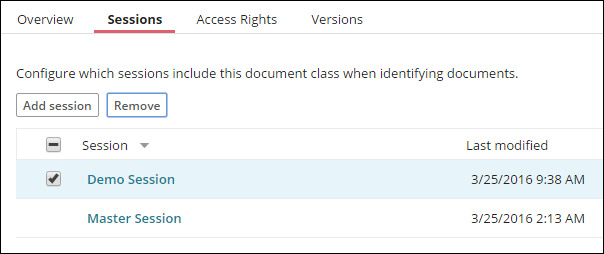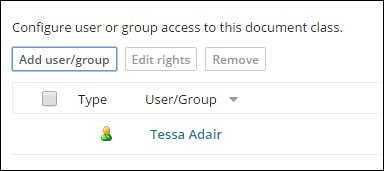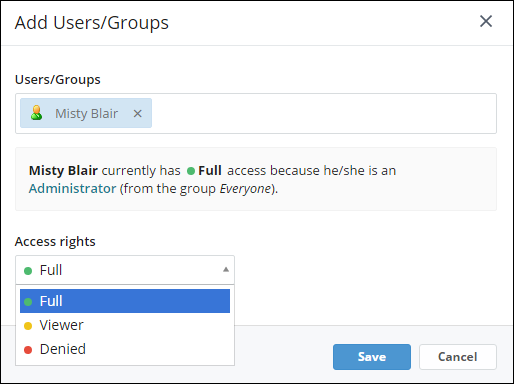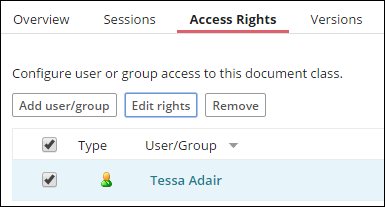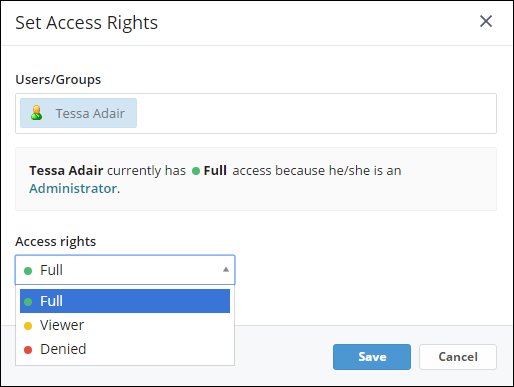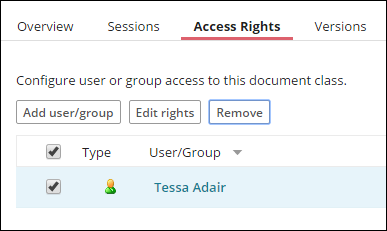Document Class Details
 to the right of the document class name at the top of the details pane.
to the right of the document class name at the top of the details pane.
The Overview section in the right pane displays document class overview information, storage information, and the sample pages associated with the document class.
- Created on: Date the document class was published from Quick Fields or imported via the Quick Fields Administration Console to the Quick Fields Server.
- Last modified on: Date the document class was republished to the Quick Fields server after being modified in Quick Fields. The modified date will also update if you restore a version or import a new one. Changing the document class name, description, etc. will not update the modification date.
- Server: The Laserfiche Server on which the repository is located.
- Repository: The repository the document class is configured to send to.
- User/Group:The user/group credentials used to sign in to the repository to send the documents.
- Description: Description of the document class. Click Add description to add a description. Click Edit to modify an existing description.
- Default document name:The name of the documents processed and stored.
- Folder path: The repository location to which the documents will be stored.
- Sample pages associated with the document class will be listed here as thumbnails. Click on one to preview it.
The ![]() Sessions section displays the sessions the selected document class is linked to. Click the name of a column to sort by that column.
Sessions section displays the sessions the selected document class is linked to. Click the name of a column to sort by that column.
Add session
In Quick Fields 10 and later, sessions and document classes exist independently of each other on the Quick Fields Server but can be linked together. This allows sessions and document classes to be more modular with less duplication. For example, a session contains configuration information for identifying documents. If you are scanning large batches of multiple types of documents, you can link the document classes to a session for identification purposes. If you are scanning one type of document, you can manually assign a document class to those scanned documents and do not need to link to a session for identification. In other cases, you may find it useful to have multiple sessions link to the same document class, instead of duplicating document classes across sessions.
- To link additional sessions to the selected document class, click Add session and
 start typing the name of the session you want to link. Select the desired session from the list that appears and click Create links.
start typing the name of the session you want to link. Select the desired session from the list that appears and click Create links. - To unlink a session, select it from the list and click
 Remove. Confirm that you want to remove the link between the document class and the session by clicking Remove links in the dialog box. The session will not be removed from other document classes it's linked to, nor will it be removed from the Quick Fields Server.
Remove. Confirm that you want to remove the link between the document class and the session by clicking Remove links in the dialog box. The session will not be removed from other document classes it's linked to, nor will it be removed from the Quick Fields Server.
The Access Rights section displays the users and groups who have access to the selected document class and what level of access they have. Click the name of a column to sort by that column.
Note: Administrators will always have full access and users without any access rights will have view only access by default. See Quick Fields Security for more information.
To add and configure users and groups for the selected document class
- Click
 Add user/group.
Add user/group. - In the
 Add Users/Groups dialog box, start typing the name of the user or group you want to add, then select the desired user or group from the list that appears.
Add Users/Groups dialog box, start typing the name of the user or group you want to add, then select the desired user or group from the list that appears. - Under Access Rights, select if you want the added user or group to have Full rights, Viewer rights, or no rights.
- Full: The user or group will have full access to the document class. They will be able to see, modify, and run the document class in the Quick Fields Administration Console, Quick Fields, and Quick Fields Scanning.
- Viewer: The user or group will only be able to view and run the document class in the Quick Fields Administration Console, Quick Fields, and Quick Fields Scanning.
- Denied:The user will not have any access to the document class in the Quick Fields Administration Console, Quick Fields, or Quick Fields Scanning.
- To edit the rights of a specific user or group, select the check box to the left of the user or group and click
 Edit rights. In the
Edit rights. In the  Set Access Rights dialog box, modify the user or group's rights and click Save.
Set Access Rights dialog box, modify the user or group's rights and click Save. - To remove a user or group, select the checkbox to the left of the user or group and click
 Remove.
Remove.
For more information, see the Quick Fields Server Security topic.
The Versions section displays the current and old versions of the selected document class. You can filter the list of versions by when they were created or who created them.
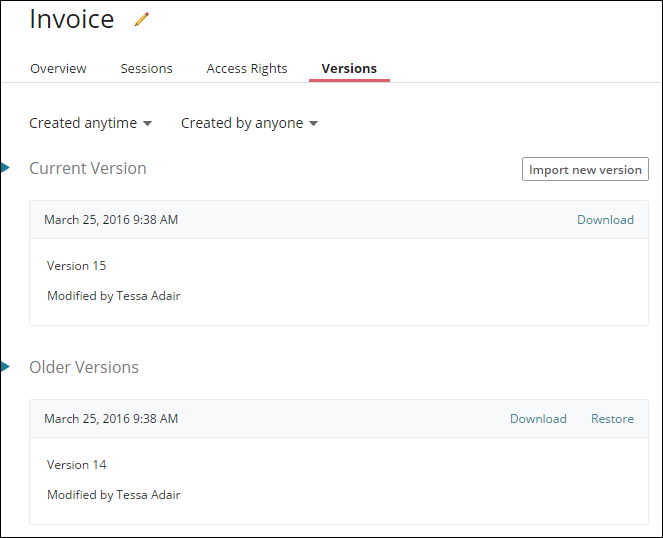
- Click Created anytime to filter by all dates, today, this week, this month, or define a custom date range.
- Click Created by anyone and select the user you want to filter by.
Current Version
Displays the current version, the date it was versioned, and who it was modified by. Click Download to download the current version.
Older Version
Displays a list of the document class's previous versions, the dates they were versioned, and who they were modified by. Click Download next to the older version you want to download. Click Restore next to a version to designate it the current version. The restored version will replace the current version.
To import a new version
- Click Import new version.
- Browse to the document class file (zip format) you want to upload as the new version.
